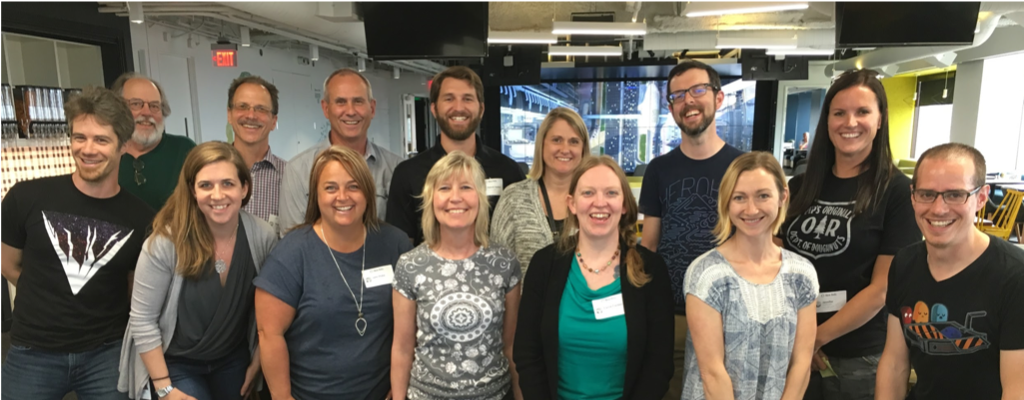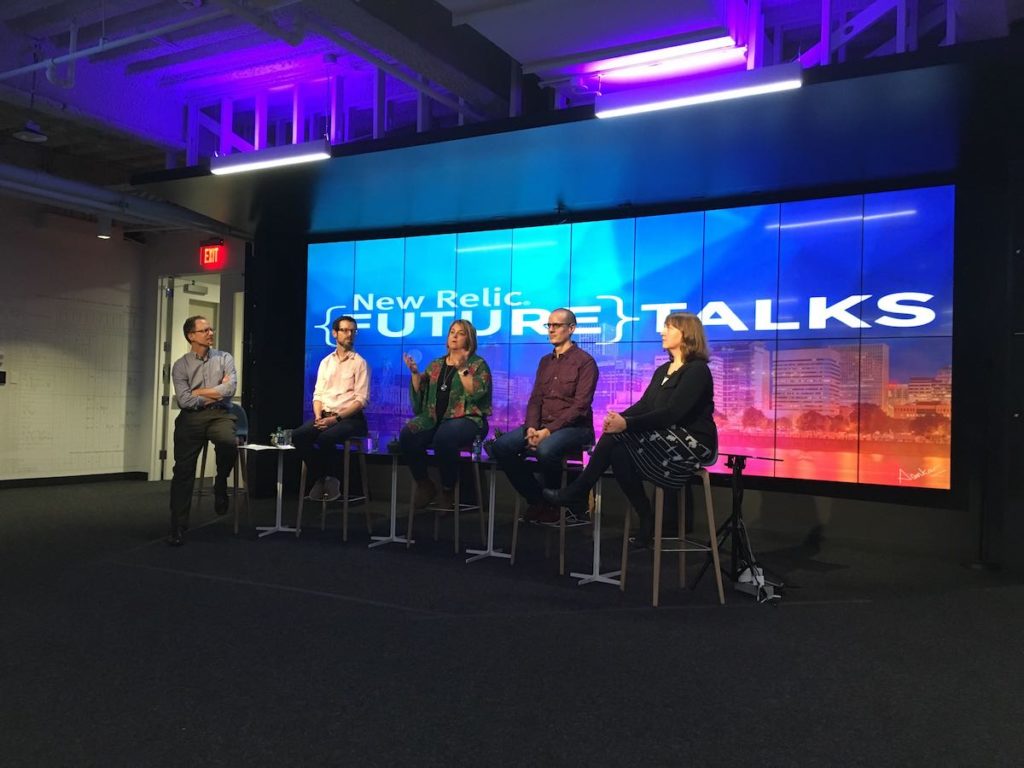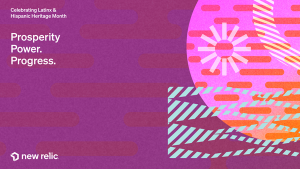Agile thinking has transformed the way technology companies innovate, compete, and succeed in a fast-changing world. Can it do the same for the nation's school systems?
This is actually a burning question for many of my fellow Relics who work at our Global Engineering Headquarters in Portland, Oregon.
New Relic gives all employees paid time off for volunteer activities—part of our broader commitment to mobilize company resources to benefit the communities where we live and work—so during the past year, one of these partnerships brought a group of Relics together with Innovate Oregon (the nonprofit arm of the Technology Association of Oregon) and the Dayton, Oregon school system— a truly exceptional team of teachers with a visionary school administrator. We came together to test the idea that the same Agile principles being used at many successful technology firms could also make a difference in the classroom—giving teachers a powerful tool for solving problems, engaging with students, and making education a more relevant and meaningful activity for everyone involved.

We want to share the story of New Relic’s work with Innovate Oregon and Dayton Public Schools to recognize the teachers’ dedication and hard work, and also encourage other businesses and organizations, in Portland and beyond, to get involved in helping to replicate and scale their initial successes with Agile methods in the classroom.
An Agile alternative
Like public schools in many places, those in Oregon sometimes offer inconsistent, and at times disappointing, educational experiences. In the spring of 2018, Thompson Morrison addressed a group of New Relic employees our Portland office and shared examples of how Agile thinking and problem-solving methods could play an important role in the state’s classrooms.
Morrison is the director of development for OnlineNW and the chief evangelist for Innovate Oregon. His visit with New Relic wasn’t purely educational; he realized that he needed help to scale his approach, and that New Relic’s Agile practitioners could play an important role.
According to Morrison, a core problem with public education today involves schools that find themselves locked into ways of thinking and teaching that are no longer relevant for students growing up in a 21st century, technology-driven economy.
“A lot of kids we talked to were showing up, but they didn't know why they were even in school," Morrison said. "We're living in a fast-paced, Agile world, and suddenly we walk into an educational system that really hadn't changed in 100 years." An emphasis on rote learning and regimented schedules, for example, actually undermines the problem-solving and creative thinking skills students today will need as knowledge workers.
But Morrison said that he also saw a potential solution to the problem—one that transplanted modern ideas about solving problems and working as teams from the technology industry into public school classrooms. And one idea in particular stood out as being especially valuable in this context: the use of Agile tactics such as tight feedback loops, iteration, failing fast, and the use of retrospectives.
"What we could do was work with educators—not just about their skill sets but also about their mindsets," Morrison said. "Specifically, the Agile mindset: Could we begin to bring our culture of learning, with these fast, iterative cycles, to empower teachers and the learning process?"
A rural school—and a visionary principal—embrace Agile
By the time Morrison first spoke with the New Relic Portland team, he had already made progress testing his ideas about applying Agile methods in the classroom. He also knew that he would need help taking the experiment to the next level.
In the spring of 2017, Morrison had found an ideal partner for pursuing his vision of applying Agile in the classroom. He started working with Jami Fluke—the principal of a combined middle school and high school in Dayton—a rural community in the heart of Oregon’s wine country.
A talented administrator and a staunch advocate for her teachers and students, Fluke turned out to be the perfect partner for Morrison. She was open to trying new and unconventional tactics, judging them by their effectiveness, not by whether they fit a conventional educational mindset.
Working together through 2017 and into 2018, Fluke and Morrison successfully launched an initial effort to bring Agile thinking to the classroom in Dayton: a summer class, where rising high-school juniors executed a six-week sprint to define and solve a business problem by building a mobile app.
By the spring of 2018, Fluke and Morrison were ready to take the next step: scaling their Agile experiment across multiple classrooms, bringing more Dayton teachers into the mix, and confirming that Agile tactics could enable a more engaging and relevant experience for students and teachers alike. To make that happen, Morrison needed a group of Agile practitioners who could replicate his one-on-one approach to working with teachers.
Timely help from New Relic’s Agile practitioners
Morrison found the help he needed when he came to New Relic in the spring of 2018 to discuss his work with Jami Fluke. Almost immediately, a group of five Relics stepped forward to volunteer their time and Agile expertise to help Morrison execute an expanded pilot program.
The pilot, which took place during the remainder of 2018, replicated Morrison’s one-on-one approach: pairing five teachers with five New Relic Agile practitioners. The Relics would act as sounding boards and advisors for applying Agile concepts from the technology and business worlds to solve classroom challenges. The goal would be to empower the teachers with new tactics to engage students, make learning more relevant and rewarding, and help teach students how to think for themselves—not simply to regurgitate information.
Following a brief liftoff meeting (modeled on the standard Agile project kickoff methodology), and a few hours in the classroom observing the teachers, the partners scheduled weekly 30-minute video calls with no fixed agendas and no expectations—just a mutual commitment to show up and to be present for one another.

By the end of 2018, the partnership pilot had run two cycles—both of them successful. And in January of 2019, Morrison returned to New Relic’s Portland office, along with Fluke; Carrie Carden, a Dayton science teacher involved in the program; and two Relics, Senior Engineering Manager Mitchell HuffMenne and Principal Engineer and Architect Brent Miller. The group appeared as part of New Relic’s FutureTalk monthly tech-talk series—looking not only to showcase their work in Dayton, but also to recruit a new group of Relics to continue scaling the model.
Partnerships that reveal ‘a world of practices’
During the FutureTalk, Morrison and his colleagues emphasized one of the program’s most important accomplishments: connecting Dayton’s teachers with new options for solving classroom challenges. "These conversations aren't between two educators," Carden told the FutureTalk audience. "It's not me and other teachers talking about how we can teach better, it's talking about how to manage humans better. And it's opened up a world of practices ... that I never knew existed."
For the Relics, learning about the day-to-day realities of managing a classroom was eye-opening. "That was where my mind was blown, when I saw the sort of challenges that my partner teacher, Tara, was facing every day," said HuffMenne.
During one social studies project, built around a set of group presentations, HuffMenne recalled, his partner “divided [students] into small groups—three to five kids per group, five or six groups … All these kids in a room, deliverables along the way, and a way to get feedback on those deliverables through the course of class. Sounds pretty similar to how we run sprints, how we wrote our software and use feedback from our customers." But there was one big difference: "Instead of having a bunch of professional peers, you have children!”
Finding insights in failure
According to Miller, who was paired with Carden, their work together reinforced the importance of treating failure as an important tool for learning and improving.
"We talked every week, we'd try experiments—some of them work, some of them don't," Miller said. But while specific tactics didn't always survive their classroom trials-by-fire, the general principles for running an Agile environment proved to be highly effective problem-solving tools. For example, Miller said, "You have to figure out how to break up the work so that everybody can participate, everybody can contribute. You have to connect people to the work, so that they see it as meaningful and valuable to themselves."
"One problem that we've talked a lot about is: How do you get the students to have autonomy, be able to work autonomously?" Miller said. "In a very traditional educational system, teachers say what you do and you do it. But in this [Agile-informed] model, the teacher is not the person handing out the knowledge—you're enabling the learning to happen."
"It's been the best professional development I've ever had as a teacher," Carden concurred. "The changes that are happening in my classroom are more important, and more valuable, and making a bigger difference in my students than anything that I've experienced so far."
Wanted: more Agile experts!
For Morrison and his colleagues, the next step is to take the current program, which is built on a small group of highly personalized relationships, and eventually scale it to help hundreds of school systems across Oregon and the entire nation.
“Other schools are eagerly awaiting Innovative Oregon's help to take the practices that we've done as a beta launch here with New Relic, and apply them to their schools,” Morrison said. “To do that, they need practitioners willing to spend 30 minutes with their teacher partners each week, to brainstorm, share ideas and inspiration and help re-think the challenges and opportunities facing their classroom that week.”
Bringing Agile methods to the classroom, he added, can also be uniquely rewarding for the businesses that participate. It’s a great way for technology and business professionals to make a difference leveraging the very same skills, talents, and experience that they rely on every day.
Giving value—and getting it, too
According to the Relics involved with the Dayton project, putting their talents to work in this way turned out to be an incredibly satisfying experience. “It was hugely personally rewarding,” said HuffMenne. “Compared to anything else I did in the last four months, for the small amount of time I put into this … it’s the most valuable thing I’ve done.”
“This is very high-leverage work,” Miller agreed. “Knowing my few hours could impact thousands of students is incredible.” At the same time, he added, “this experience gave me context for how we work. This was super helpful for improving my work here at New Relic.”
In fact, New Relic employees have been so inspired by the work their peers are doing in Dayton that a new group of Agilists have stepped forward to establish a similar pilot program with another Oregon school system, kicking off this spring. We’re hoping that this is only the beginning of a long and fruitful partnership to bring the benefits of Agile methodologies to the world of education.
Get involved! Want to support the effort to apply Agile thinking in the classroom? Contact Thompson Morrision to learn more about the program and how your organization can help it succeed.
The views expressed on this blog are those of the author and do not necessarily reflect the views of New Relic. Any solutions offered by the author are environment-specific and not part of the commercial solutions or support offered by New Relic. Please join us exclusively at the Explorers Hub (discuss.newrelic.com) for questions and support related to this blog post. This blog may contain links to content on third-party sites. By providing such links, New Relic does not adopt, guarantee, approve or endorse the information, views or products available on such sites.


